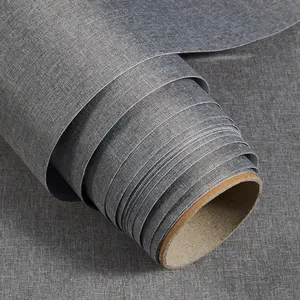Trang trí các bức tường và biến những căn phòng bình thường trở nên đặc biệt với
hình nền vô cùng phong cách và sang trọng, chỉ có trên Alibaba.com. Được sản xuất bằng chất liệu tốt nhất và công nghệ in offset tiên tiến chỉ mang đến cho người tiêu dùng những sản phẩm chất lượng cao, siêu bền.
hình nền tự dính này có màu sắc thú vị với các bản in 3D hợp thời trang có thể làm nổi bật các bức tường thông thường và giúp bất kỳ căn phòng nào có được vẻ hiện đại và tinh tế. Khám phá bộ sưu tập tuyệt đẹp với các bản in và thiết kế đầy đủ để tìm một món đồ phù hợp với nhu cầu của một người.
Alibaba.com mang đến một bộ sưu tập tuyệt vời gồm
Hình nền 3D độc đáo và linh hoạt, tăng thêm nét chân thực bất kỳ không gian nhất định và có thể kết hợp tốt với nội thất hiện đại và cổ điển. Các mặt hàng PVC này hấp dẫn về mặt thẩm mỹ và có nhiều biến thể để phù hợp với các đồ trang trí khác nhau và quan trọng nhất là bảo vệ tường khỏi các tác nhân khác nhau.
hình nền không thấm nước được sản xuất bằng nhựa PVC bền có một số đặc điểm mong muốn như bảo vệ chống nấm mốc và có thể dễ dàng tháo ra mà không để lại bất kỳ dấu vết nào trên tường.
Sửa chữa và thay đổi nhà cửa. giao diện của họ hoàn toàn với
hình nền trang trí rẻ tiền và lộng lẫy, hiện đại, độc đáo, sang trọng và thanh lịch. Những tờ giấy lộng lẫy này được phủ nhựa vinyl và có thể biến những bức tường kém hấp dẫn nhất thành một thứ gì đó đẹp đẽ và phong cách. Chúng có thể được tùy chỉnh theo sở thích của người mua hàng, có khả năng chống ẩm và sử dụng lâu dài. Người mua sắm có thể khám phá
hình nền tuyệt đẹp với nhiều màu sắc và kết cấu khác nhau và tìm một mặt hàng phù hợp với nội thất của họ.
Alibaba.com cung cấp vô số
hình nền có thể phù hợp với bất kỳ loại tường nào. Chúng có nhiều hình dạng, kích thước, màu sắc và hình in và có độ bền cao. Những vật dụng này có thể được sử dụng để che những bức tường bị hư hỏng hoặc để tân trang lại toàn bộ không gian. Mua bộ sưu tập tuyệt vời và tận hưởng chiết khấu tuyệt vời.














